A Tumblr Dedicated to Pop-Culture's Obsession with Prehistory
Last active 60 minutes ago
Don't wanna be here? Send us removal request.
Text
I wish I could get a job teaching vampire history in schools...
Vampire movie being popular means I have to read things like “having to be invited in comes from that old vampire movie The Lost Boys”
4K notes
·
View notes
Text
No problem! I like and agree with your distinction between cryptids and non-cryptids. If there is no "(pseudo)scientification" of a subject, then it's not a cryptid. Of course, as I mentioned earlier the difficulty there is that euhemerism as a hermeneutic excludes nothing. See, as per your suggestion, Skinwalkers. They are discussed by Eberhart who gives the earliest source on them as cryptids as an article by International Cryptozoology Museum proprietor Loren Coleman titled “The Abominable Werewolves of the Southwest” from Strange Magazine no. 7 (April 1991): 40–41.
For those who don't know, Strange Magazine was a short-lived but important paranormal periodical started in 1987 by Maryland magician and filmmaker Mark Chorvinsky and intended as an American counterpart to the UK's Fortean Times. In the same way that FT has a regular cryptozoology column by Karl Shuker, SM had one by Coleman. However the magazine ceased physical publication in 1998 with Iss. 20, though it did produce three online ezine issues.
Anyway, Coleman's article is a classic bit of cryptozoological euhemerism with Coleman assembling a collection of accounts of Hairy Bipeds (some more ape-like and others more canid-like) seen in New Mexico between 1965 to 1970. Coleman then speculates if such creatures might be the basis for the Skinwalker/yee naaldlooshii of Navajo/Diné folklore and cites William Morgan's Human-Wolves Among the Navaho (1936) and Patrick Walsh's “The Skinwalker,” Affword 4, no. 1 (Spring 1974): 20–22 as his two sources on the folklore.
This then would appear to be the exact moment that the Skinwalker entered mainstream cryptozoology, though Coleman has noted that he did discuss Skinwalkers as cryptids earlier in his Creatures of the Outer Edge (1978), co-authored with Jerome Clarke, pages 109-112.
It is peculiar how controversial these figures have become recently, at least on Reddit where r/Cryptids banned discussion of them as cryptids and has begun deleting posts which make reference to the monsters (including posts I made there, which is annoying). Concurrently r/Skinwalkers has also banned discussion of Skinwalkers as cryptids. Moreover, someone showed up on r/Cryptids saying that they were banned from r/Werewolves for asking about cryptid Dogmen. I don't think I realized how big on censorship Reddit was... I understand that this is being done in the name of cultural sensitivity towards North American indigenous peoples, but sooner or later these same misguided crusaders are going to realize that most NA cryptids are connected to indigenous traditions in some way: Bigfoot/Sasquatch, Ogopogo, Thunderbirds, etc... hell even Mothman gets linked up with the so-called "Curse of Chief Cornstalk." It's an unavoidable aspect of American culture. As for Collin Dickey's The Unidentified... funny you should bring that up. I was actually one of the reviewers that Penguin sent a copy of that book to back when it first came out. I... didn't love it. You can read my review here if you want. As a Fortean primer it's not bad. My main issue with it was Dickey's overdependency on the outdated ideas of German sociologist Max Weber regarding the notion of "disenchantment." A lot of Skeptics - like Dickey - love this idea, not because it's an accurate representation of the modern world but rather because it's how they wish the world was. I will say, the one part of The Unidentified I do find myself going back to repeatedly is the part where Dickey discusses the history of conspiracy theories surrounding FEMA. When Hurricane Helene hit Western NC and the people most in need of help were chasing FEMA agents off with shotguns and yelling about how the hurricane was sent by the DOD, I found that it helped to remind people that FEMA were the villains in the original The X-Files movie (1998).


Please stop discrediting your ancestors' ability to tell stories by trying to find material/physical origins to their stories. Krampus isn't a cryptid, dragon stories weren't inspired by dinosaur fossils, every region has its own mythology and fae are only a thing in Celtic, English, and English-colonized regions, your ancestors were perfectly capable of doing things without help from aliens, and our world is weird enough that tales of mysterious strangers, mass disappearances, memories not lining up, and so on, are better explained as a product of OUR world than hypothetical other worlds/timelines. A lot of weird tales were spun by storytellers. Give some respect to their hard work.
2K notes
·
View notes
Text
@majingojira, cryptozoology is the "scientification of folklore" to paraphrase cultural critics Roger Grimshaw and Paul Lester's The Meaning of the Loch Ness Monster (1976), and as expanded upon by French folklorist Michel Meurger in his Lake Monster Traditions: A Cross-cultural Analysis (1988), co-written by Claude Gagnon. You obviously have a serious interest, hence your citation of Eberheart, and so if you haven't read Grimshaw, Lester, and Meurger I would highly recommend it. "Scientification of folklore" is really just fancy way of saying euhemerism, which is the true cornerstone of cryptozoology and most other Fortean topics. Naturalist Adrian Shine in his recently published A Natural History of Sea Serpents (2024) talks about this as the process of "rationalizing" folklore. It is, as you suggest, a fundamentally pseudoscientific endeavor. And it excludes very little. Some today want to argue that vampires and werewolves (or "Skinwalkers") aren't cryptids. But then what is the chupacabra? Or the Beast of Bray Road? Bernard Heuvelmans, the self-styled Father of Cryptozoology, considered mermaids, fairies, and djinn to all be cryptids as outlined in the third issue of Internation Society of Cryptozoology's official journal.
As for La Llarona and the Yuki-Onna... You allude to Lafcadio Hearn's book Kwaidan: Stories and Studies of Strange Things (1904) whose version of the story of Yuki-Onna has become the canonical one, largely thanks to its presence in Masaki Kobayashi's acclaimed 1964 film Kwaidan, which has been parroted in both Japanese folklore collections and pop-culture (i.e. manga/anime) ever since. However scholar Yoko Makino, in her essay “Lafcadio Hearn's ‘Yuki-Onna’ and Baudelaire's ‘Les Bienfaits de la Lune’” (Comparative Literature Studies Vol. 28, no. 3 Summer 1991: 234-44), has shown that Hearn almost certainly "improved" upon the version of the tale of the Yuki-Onna found in his Kwaidan. The older versions of the Yuki-Onna story we have that pre-date Hearn are very rudimentary in comparison and contain none of the pathos found in Hearn's rendition. They basically just describe a ghostly woman seen during snowstorms; cf. folklorist Michael Dylan Foster's The Book of Yokai (2015/2024) for some examples. Makino speculates that Hearn - conversant in French weird fiction - likely appropriated the dramatic touches found in his rendition from Charles Baudelaire's “Les Bienfaits de la Lune” (The Moon's Blessings), essentially creating the narrative template for what today is thought of as an "authentic" Japanese folktale.
La Llarona is a similar story. Though you'll see sources (*cough* wikipedia *cough*) claiming that her story goes back to the 16th-century and even Aztec mythology, there is really nothing in the written record prior to 1857 when a very rudimentary version of the story is first recorded by Mexican historian J.M. Escalante. Folklorist Bacil F. Kirtley, in his classic article "La Llorona" and Related Themes" (Western Folklore, Vol. 19, no. 3 Jul., 1960: 155-168), makes the compelling argument that Escalante was playing off of the German folktale "of 'Die Weisse Frau' (The White Lady)—which reproduces many of the features consistently recurring in the more developed versions of 'La Llorona.'" Mexico saw a massive influx of German immigrants in the mid to late 19th-century and today there are an estimated 1,200,000 Mexicans with partial German ancestry. These migrants left a notable impact on Mexican culture. The accordion, for example, synonymous with traditional Mexican music today, comes from Germany.


Please stop discrediting your ancestors' ability to tell stories by trying to find material/physical origins to their stories. Krampus isn't a cryptid, dragon stories weren't inspired by dinosaur fossils, every region has its own mythology and fae are only a thing in Celtic, English, and English-colonized regions, your ancestors were perfectly capable of doing things without help from aliens, and our world is weird enough that tales of mysterious strangers, mass disappearances, memories not lining up, and so on, are better explained as a product of OUR world than hypothetical other worlds/timelines. A lot of weird tales were spun by storytellers. Give some respect to their hard work.
#Folklore#mythology#legends#cryptids#cryptozoology#japanese folklore#japanese mythology#yuki-onna#la llorona
2K notes
·
View notes
Text
Of course it's gatekeeping. You're arbitrary excluding and putting down certain iterations of certain stories because... why? You don't like the vocabulary being used? You don't think those versions are "correct"? Or "authentic"? Both of which are frankly quixotic notions when dealing with folklore. It's not clear honestly how or why you're making this judgment. But regardless that's not the prerogative of someone interested in studying folklore "anthropologically" as you claim. As British folklorist Mark Norman puts it "folklore is the beliefs, traditions, and culture of the people. It expresses our shared ideas and values. It is both how we were and how we are. Without a record, our customs and traditions may become lost to us in the present." The job of the folklorist then is to record those beliefs, traditions, and customs - regardless of what we personally think or feel about them. A full and complete record is what matters. And people telling stories/making claims about Krampus being a cryptid, dragons equaling dinosaurs, the menehune as the Hawaiian equivalent of fairies, aliens building Stonehenge, and the ancient Egyptians having a Stargate are also participating in that tradition. They too are folk and this is their lore.


Please stop discrediting your ancestors' ability to tell stories by trying to find material/physical origins to their stories. Krampus isn't a cryptid, dragon stories weren't inspired by dinosaur fossils, every region has its own mythology and fae are only a thing in Celtic, English, and English-colonized regions, your ancestors were perfectly capable of doing things without help from aliens, and our world is weird enough that tales of mysterious strangers, mass disappearances, memories not lining up, and so on, are better explained as a product of OUR world than hypothetical other worlds/timelines. A lot of weird tales were spun by storytellers. Give some respect to their hard work.
2K notes
·
View notes
Text
While @hapalopus makes several points here which are undoubtedly true - the evidence for dragon legends being based on dinosaur fossils is actually extremely poor - it clearly hasn’t occured to them that euhemerism - the act of finding material/physical origins for old myths and legends - is a way to keep those stories alive by rooting them in the quotidian. Also folklore travels, so making essentialist claims like “fae only being a thing in Celtic, English, and English-colonized regions” is naive at best. Some of the most famous figures from world folklore originated in different countries than the ones they are associated with today (i.e., La Llorona is of German origin, Yuki-Onna is French). Moreover considering how much of the world the English colonized you might as well just say “fae are everywhere" at this point. Lastly tales of aliens, mysterious strangers, mass disappearances, the mandella effect, and hypothetical other worlds/timelines are all examples of modern myths. IDK what OP thinks they’re doing in this post but they’re essentially trying to gatekeep the way people do folklore.


Please stop discrediting your ancestors' ability to tell stories by trying to find material/physical origins to their stories. Krampus isn't a cryptid, dragon stories weren't inspired by dinosaur fossils, every region has its own mythology and fae are only a thing in Celtic, English, and English-colonized regions, your ancestors were perfectly capable of doing things without help from aliens, and our world is weird enough that tales of mysterious strangers, mass disappearances, memories not lining up, and so on, are better explained as a product of OUR world than hypothetical other worlds/timelines. A lot of weird tales were spun by storytellers. Give some respect to their hard work.
2K notes
·
View notes
Text
I also noticed Monarch: Legacy of Monsters (which is excellent BTW) reference to the 1950s sci-fi trope of the female scientist and the disbelieving male GI but @tyrantisterror needs to revisit those classic 50s monster movies because those female scientists are never shown as incompetent or incapable of doing their job. From paleontologist Lee Hunter in The Beast from 20,000 Fathoms (1953) to entomologist Dr. Patricia Medford in Them! (1954) and biologist Stephanie Clayton in Tarantula (1955) as well as marine biologist Prof. Lesley Joyce in It Came From Beneath the Sea (1955), and ichthyologist Helen Dobson in Revenge of the Creature (1955) all are portrayed as smart, brave, independent, and often the ones with the answers to save humanity if only the dumb military men would listen to them, which they eventually do.
In none of these films are these working women scientists forced to abandon their careers. Yes they often to get married, or at least accept a proposal, by the end of the film, but the movies seem to hold out hope for an appropriate work-life balance (harder than you would think in academia).
All-in-all these films were incredibly progressive for their time. It Came From Beneath the Seas ends with a denouncement of sexism which is remarkable for a movie about a giant octopus attacking the Golden Gate Bridge. These characters were not damsels in distress and paved the way for the likes of Dr. Ellie Sattler in Jurassic Park (1993), Dr. Eleanor Alloway in Contact (1997), and Dr. Susan Tyler in Mimic (1997).
For more I would recommend looking up gender studies scholar Linda Levitt’s essay on this topic "1950s B-Movie Women Scientists: Smart, Strong, but Still Marriageable" as well as film journalist Bob Calhoun's "Atom Age Feminists: The Women of '50s Sci-Fi." There's also an entire book on this subject: scholar Bonnie Noonan's Women Scientists in Fifties Science Fiction Films (McFarland, 2005).
Really enjoying Monarch: Legacy of Monsters so far. The flashback scenes in particular are very much my cup of tea, for reasons anyone who's read ATOM could easily guess. There's a thing that happens a lot inf 50's monster movies where a lady scientist is introduced and the male character initially can't believe she's the scientist they're looking for because she's a woman, and in the old movies it's played as a "Wow, times are crazy because broads can have jobs now, how fucking weird is that, they better get husbands and become wives soon!" thing, with the men's disbelief being justified and the women often being incapable.
And, like, I mocked this pretty relentlessly in my two kaiju books, but Monarch: Legacy of Monsters takes a jab at it too. Monarch has the same setup as the old movies, but in execution it's clearly the guy making presumptions who's weird by the narrative's standards, and presented as an embarrassing moment for him, where his prejudice made him look like a jackass, and the lady scientist goes on to be INCREDIBLY competent and capable. It's nice, I like it.
#monarch: legacy of monsters#godzilla#them! 1954#the creature from the black lagoon#giant monsters#feminism#1950s#1950s history#women in stem#ray harryhausen#jurassic park#ellie sattler
115 notes
·
View notes
Link
For everyone who has been dying to know my in-depth thoughts on GODZILLA VS KONG (2021, Dir. Adam Wingard), the MonsterVerse as a whole, and my informed speculation on the future for both characters you can check out the latest episode of The Film Find podcast.
Spoiler Warning...
#godzilla vs kong#the film find#Godzilla#monsterverse#King Kong#kong#Mechagodzilla#godzilla singular point#hbo max#kaiju#kaiju eiga#toho#Legendary Pictures#adam wingard#hollow earth
55 notes
·
View notes
Photo
I was invited on to Kaiju Transmissions to explain how in the world we keep getting King Kong cartoons that don't involve any of the rights holders (i.e. Universal Studios and the Estate of Marian C. Cooper).
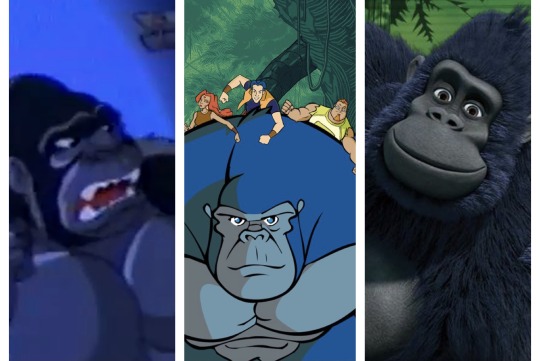
NEW EPISODE: KONG ANIMATED MOVIES
Byrd and Matt are joined by Kevin Derendorf (Maser Patrol/Kaiju For Hipsters) and Justin Mullis (Man Creates Dinosaurs blog) to talk about King Kong’s animated forms, with a spotlight on four “unofficial” animated films that were made without the permission of Kong’s rights holders. We discuss animated musical The Mighty Kong (1998), two Animated Series sequels Kong: King of Atlantis and Kong: Return to the Jungle, and the feature length pilot episode of Kong: King of the Apes. But first we discuss the original 60s “King Kong Show”, and how the convoluted legal rights to King Kong allowed the original films novelization go into the public domain, and how that lead to these animated productions being made in the first place. We also bust some very commonly repeated myths about the availability of the rights to King Kong. Relax and enjoy the conversation! -iTunes: https://itunes.apple.com/us/podcast/kaiju-transmissions-podcast/id1128609095?mt=2
-Google Podcasts: https://podcasts.google.com/feed/aHR0cHM6Ly9mZWVkLnBvZGJlYW4uY29tL2thaWp1dHJhbnNtaXNzaW9ucy9mZWVkLnhtbA
-Podbean: https://kaijutransmissions.podbean.com
-Stitcher: https://www.stitcher.com/podcast/kaiju-transmissions-podcast/the-kaiju-transmissions-podcast?refid=stpr
-Android: https://subscribeonandroid.com/kaijutransmissions.podbean.com/feed/
20 notes
·
View notes
Photo




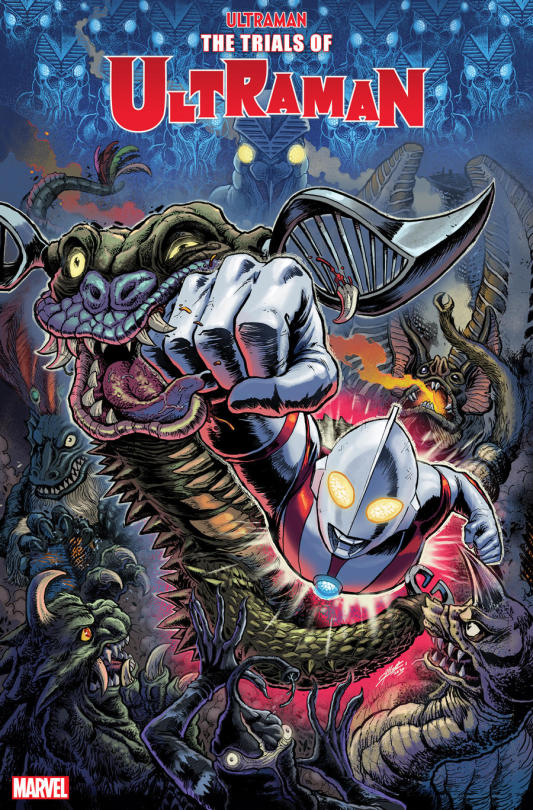


February is over and I’m ready to offically declare this month Kaijū Māchi.
Fans and aficionados of giant monsters here’s the date-to-date breakdown of all the kaijū content coming at us in March be it TV, comics, home video, or a couple of highly anticipated feature films… March 2: Monster Hunter - Blu-ray release for the 2020 film based on the hit Capcom game and co-produced by Toho. I only know one person whose seen this and he said it was surprisingly faithful to the game and much more gory then anticipated. March 4: Pacific Rim the Black - New anime series premiering on Netflix set in the Pacific Rim universe. This story takes place during the events of the 2013 film when Australia was overrun by kaijū. Early reviews say its good. March 8: Evangelion: 3.0+1.0 Thrice Upon a Time - The long awaited and frequently delayed final film in the Rebuild of Evangelion series finally has its Japanese theatrical release. No word yet on when American fans can look forward to seeing how Hideaki Anno’s increasingly off the wall re-imagining of his iconic franchise wraps up. March 17: Marvel’s second Ultraman comic series, The Trials of Ultraman, debuts with a cover by Matt Frank. But how will it compare with James Harren’s ultra-violent homage to the same franchise, Ultramega (Image/Skybound), also dropping the same day? March 23: The 4th Vol of the English translation of the manga Kaiju Girl Caramelise drops. I haven’t read this series myself but it’s apparently about a girl who transforms into a Godzilla-like monster when embarassed. UPDATE: March 25: Godzilla: Singular Point - Fans have long clamored for a proper Godzilla anime series and Godzilla: Singular Point looks like it may finally be it. While it was previously assumed that the entire series would make its worldwide debute on Netflix this month we now know this is not the case. March 30: WB Archive is releasing the obscure Tsuburaya/Rankin-Bass co-production The Bermuda Depths (1978) on Blu-ray. The film involves the Bermuda triangle, a mermaid, and a kaijū-sized sea turtle. Also being released this day are two new graphic novels from Legendary Picture’s comic imprint both serving as prequels to the feature film Godzilla vs Kong. “Dominion” will focus on Godzilla while “Kingdom Kong” focuses on, you guessed it, Kong. Both with cover art by the legendary Art Adams. March 31: Godzilla vs Kong - The long awaited and frequently delayed final film in WB/Legendary Picture’s MonsterVerse has its US theatrical release while also simultaneously debuting on the HBO Max streaming service due to the ongoing Covid-19 pandemic. “Late March” No solid release date yet but independent home video distributor SRS has promised to release the obscure Korean kaijū film War of the God Monsters (1985) on Blu-ray this month; also with a cover by Matt Frank. This film’s SFX content was cobbled together almost entirely from episodes of the TV series Return of Ultraman (1971). So if you’ve ever wanted Ultraman with no superheroes and just kaijū this may be the film for you.
#Godzilla#King Kong#godzilla vs kong#war of the god monsters#the bermuda depths#Pacific Rim#pacific rim the black#netflix#comics#comic books#ultraman#neon genesis evangelion#monster hunter#manga#Marvel Comics#marvel#anime
415 notes
·
View notes
Photo
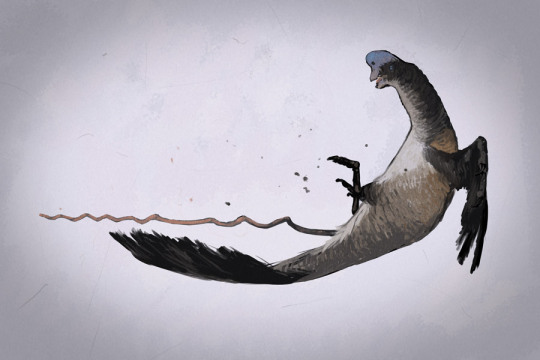
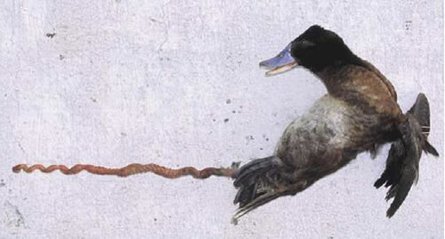
Happy Valentines Day 2021! Here’s a speculative dinosaur johnson courtesy of two Johns. Up top is paleoartist John Conway’s drawing of a male Citipati, a genus of oviraptorid dinosaur, with a fully extended corkscrew-like penis. Below that is the photo which inspired Conway’s piece, photographer John McLachlan’s photo of a male Argentinian duck with its fully extended corkscrew-like penis. The Argentinian duck has the largest penis to body ratio of any animal. Dinosaurs are the evolutionary ancestors of modern birds and ducks are some of the oldest birds evolutionary speaking, so the idea that we can look to them as a model for what kind of genitalia dinosaurs might have had makes sense.
100 notes
·
View notes
Photo
I wonder if this exhibit was part of Mark Schultz's inspiration for his comic Xenozoic Tales (aka Cadillacs and Dinosaurs)?
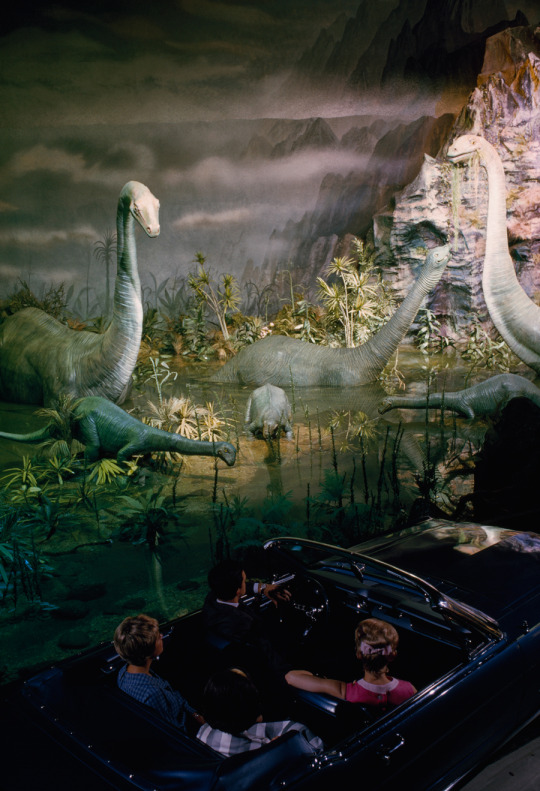
Fairgoers in new-model cars ride through displays of Earth’s history at the 1964 World’s Fair in Queens, New York. Photograph by James P. Blair, National Geographic
4K notes
·
View notes
Photo


The T. rex that appears briefly during the big race scene in Steven Spielberg’s READY PLAYER ONE (2018), based on the 2011 novel of the same name by Ernest Cline.
According to RPO screenwriter Zak Penn the T. rex seen here is not supposed to be the same one from the Jurassic Park/Jurassic World franchise as Spielberg was against referencing his own movies in the film.
Sure guys, whatever you say, that’s totally not Mark “Crash” McCreery’s Rexy, gotcha’.
#ready player one#ernest cline#Zack Penn#jurassic park#jurassic world#tyrannosaur rex#t. rex#rexy#steven spielberg
43 notes
·
View notes
Note
Then might I recommend...
youtube
Have you ever/been eyeing any other Arrow Video releases aside from the Gamera collection?
I’ve been looking into their catalogue. I’d like to get their Ringu collection, and I could definitely use an upgrade from my old Reanimator dvd. I’m sure I could blow a lot of money by going through their selection.
42 notes
·
View notes
Video
youtube
If you missed it my Kaiju Con-Line presentation, Western Monsters Japan-Style: The Vampire, Frankenstein, & Werewolf Films of Toho Studios, is now up on YouTube for anyone to check out! A few notes based on some comments I received both during and after the panel... Correction: During my presentation I claim that we do not have a story treatment by Jerry Sohl for Frankenstein Conquers the World. This is apparently incorrect. My good friend Kyle Byrd of the podcast Kaiju Transmissions has a PDF copy of Sohl’s treatment titled “Frankenstein vs Godzilla.” It’s 17 pages on yellow paper with no date and no identifying information. Kyle also can’t remember where he obtained it. So more investigation is required.
#kaiju con-line#kaiju#toho#frankenstein#frankenstein's monster#frankenstein conquers the world#werewolves#werewolf#wolfman#wolfguy#horror of the wolf#bloodthirsty trilogy#vampire#dracula#kakure kirishitan#amakusa shirō#Godzilla
28 notes
·
View notes
Link
Join me this Sunday for Kaiju Con-Line and my panel "Western Monsters Japan-Style: The Vampire, Frankenstein & Werewolf films of Toho Studios." Streaming live on Sunday July 12 at 2pm PDT/4pm CDT/5pm EDT. Panel Description: “Dracula! Frankenstein’s Monster! The Wolfman! These are not the monsters you think about when someone mentions Japan’s Toho Studios. But between 1965 and 1974 Toho produced six films featuring these iconic movie monsters: Frankenstein Conquers the World (65), War of the Gargantuas (66), Horror of the Wolf (73), and the notorious Bloodthirsty Trilogy (1970-74). Join religion and cultural studies scholar Justin Mullis to discuss these long neglected and overlooked horror movies from Toho’s golden age and how exactly one goes about turning a classic western movie monster into a Japanese one!”
#kaiju#kaiju con-line#frankenstein#frankenstein's monster#werewolves#werewolf#vampire#wolfman#dracula#Japan#toho#Godzilla#frankenstein conquers the world#war of the gargantuas#japanese mythology#yokai#japanese folklore#japanese history#bloodthirsty trilogy#horror of the wolf#evil of dracula#bloodthirsty rose#kakure kirishitan
13 notes
·
View notes
Link
If you listened to my Monster Talk interview on the cryptozoological adventures of American Founding Father Thomas Jefferson you would have heard me mention marine biologist Robert L. France's recent work on the mystery of the Gloucester Sea Serpent; perhaps the most famous sea serpent case in the history of cryptozoology. Shortly after that interview I was delighted to be presented with the opportunity to review France's new book on the topic: DISENTANGLED: ETHNOZOOLIGY AND ENVIRONMENTAL EXPLANATION OF THE GLOUCESTER SEA SERPENT. You can check out my review here.
#cryptozoology#ethnozoology#sea serpent#sea monster#marine biology#gloucester sea serpent#book review
28 notes
·
View notes
Text
So I've been AWOL from Tumblr for a few months now, but only because I've been rather busy.
So what have I been up to?
Well back in April I was invited to Texas State University to present some of my work on what is my current primary research project dealing with Thomas Jefferson (as in Founding Father Thomas Jefferson) and cryptozoology (as in people who hunt for Bigfoot and lake monsters). Subsequently I was asked to do an interview about the same topic for the award-winning podcast Monster Talk hosted by Blake Smith and Karen Stollznow.
So if you want to know why the man responsible for the Lewis & Clark Expeditions told those same two famous explorers to be on the lookout for living mammoths and giant ground sloths you'll find out here!
#thomas jefferson#cryptozoology#mastodon#mammoth#paleontology#lewis and clark#daniel boone#giants#sea serpent#america#american history
27 notes
·
View notes